The ocean is a mysterious and vast place, home to creatures that seem like they belong more in a science fiction novel than in the real world. While we often hear about the friendly dolphins and colorful clownfish, the sea hides some terrifying monsters that have been lurking beneath the waves for millennia. From the depths of the Mariana Trench to the icy waters of the Arctic, these creatures are not just legends; they are very real and still swimming in our oceans today.
1. The Giant Squid
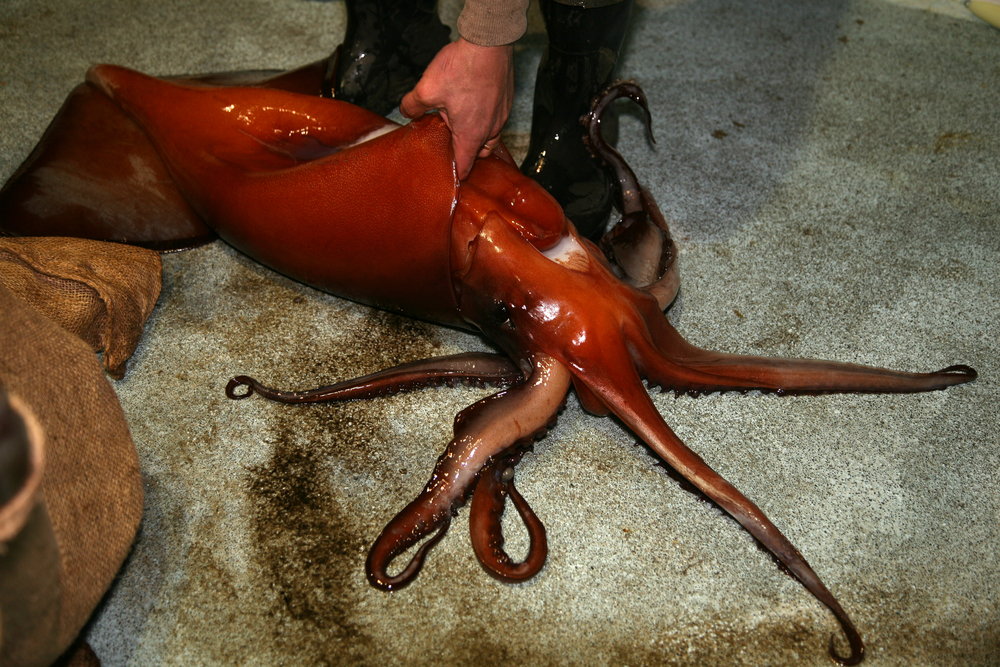
The giant squid is one of the most elusive and fascinating creatures of the deep sea. With tentacles that can stretch over 40 feet long, these creatures are the stuff of nightmares—and that’s just the ones we know about. Imagine swimming alongside a creature with eyes the size of dinner plates, and you’ll understand why they’re often compared to the legendary Kraken. While rare to spot in the wild, these elusive giants have been caught on camera, revealing their ghostly shape and swift movements. According to the American Museum of Natural their preferred habitat is way down deep in the ocean, making them hard to study and even harder to understand. What scientists do know is that these creatures are fierce hunters, using their long tentacles and sharp beaks to catch prey.
Even though they are rarely seen by humans, the giant squid leaves its mark on the oceanic food chain. They are known to engage in epic battles with sperm whales, often ending with the whale sporting scars from the squid’s sharp suckers. This adds an air of mystery and intrigue to the giant squid, fueling tales of sea monsters attacking ships and dragging sailors to their watery doom. While we might not ever fully understand these creatures, just knowing they exist somewhere in the deep is enough to keep anyone’s imagination running wild. Next time you’re near the ocean, take a moment to wonder what might be lurking beneath those waves.
2. The Goblin Shark
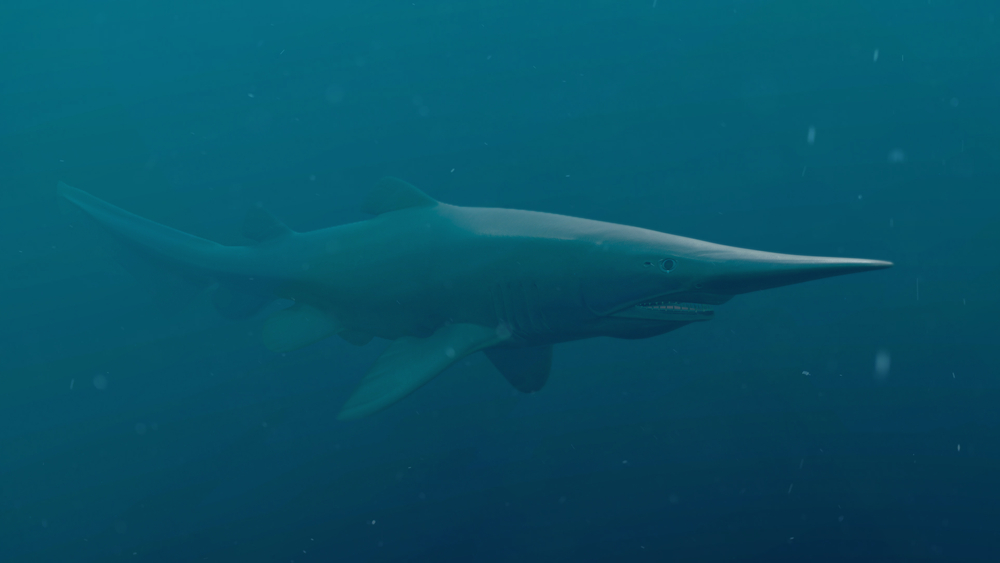
Meet the goblin shark, a living fossil that looks more at home in a horror movie than in our oceans. With its long, protruding snout and teeth that can extend outward to grab prey, this shark is a true monster of the deep. Living at depths up to 4,300 feet, the goblin shark is rarely seen by humans, adding to its mystique. Its pinkish-grey skin and flabby body make it look like something from another world. Imagine encountering a creature that appears to be smiling, only to have that smile widen into a terrifying maw when it’s ready to strike. According to Sharksider, the goblin shark’s unique hunting technique involves sensing the electric fields of its prey and then shooting its jaws forward to snatch them up.
Despite its frightening appearance, the goblin shark is not a direct threat to humans. It’s so rare and lives in such deep waters that the chances of an encounter are slim. Yet, every so often, one is accidentally caught by deep-sea fishermen, providing a rare glimpse into this mysterious species. Each time this happens, scientists rush to study the specimens, hoping to unlock the secrets of this peculiar creature. While they may not be the largest or most dangerous sharks in the sea, goblin sharks certainly hold the crown for being the creepiest. If you ever find yourself diving in the deep sea, keep an eye out for this bizarre and intriguing sea monster.
3. The Frilled Shark
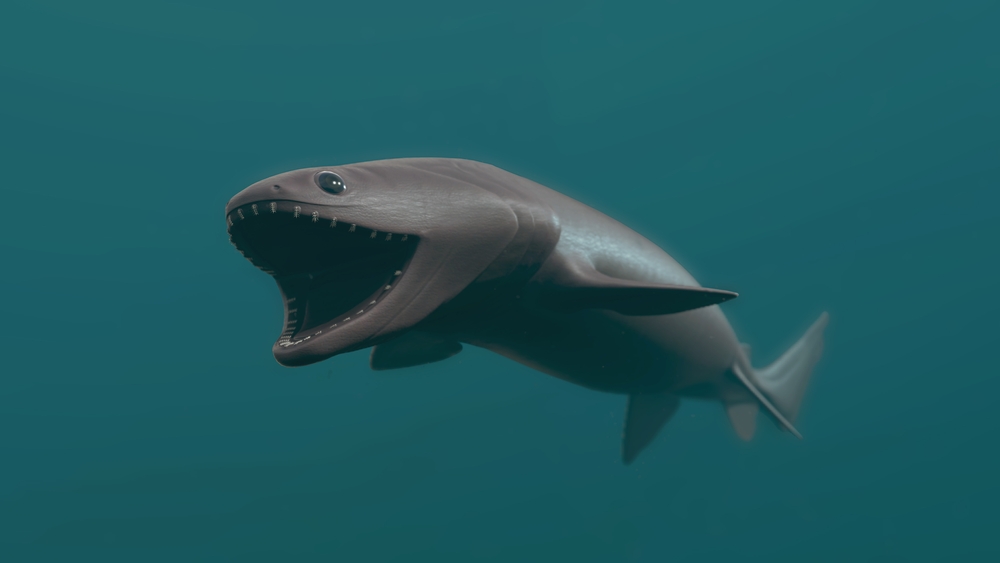
The frilled shark is another prehistoric-looking creature that seems to have swum straight out of a time machine. With its eel-like body and rows of needle-sharp teeth, it’s easy to see why this shark might inspire tales of sea serpents. It lives in the dark depths of the ocean, often lurking at around 5,000 feet below the surface. This deep-sea denizen possesses a unique set of gills that wrap around its throat, giving it a frilled appearance. Its long, snake-like body allows it to maneuver easily through the water, stalking its prey with a stealthy grace.
When it comes to catching food, the frilled shark is a master of ambush predation. It uses its flexible jaw to swallow prey whole, often opting for fish and squid that are larger than you might expect for such a creature. The frilled shark’s ancient lineage is evident in its primitive features, bearing more resemblance to its ancestors than to modern sharks. Its presence in the ocean is a reminder of a time when the seas were ruled by strange and fearsome creatures. Despite its daunting look, the frilled shark poses no threat to humans, as it prefers the solitude of the deep sea. But if you ever get the chance to see one up close, you’ll understand why it’s one of the ocean’s most terrifying inhabitants.
4. The Anglerfish
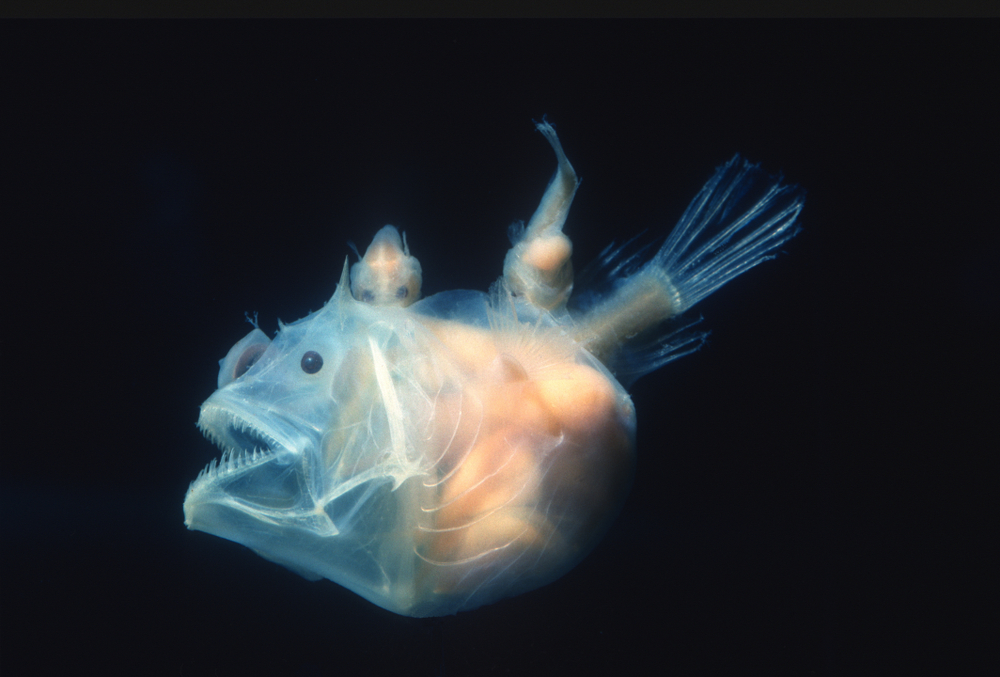
The anglerfish is as bizarre as it is terrifying, known for its bioluminescent lure that hangs over its head like a fishing rod. This eerie light is used to attract prey in the pitch-black depths of the ocean, drawing them close enough for a quick, deadly strike. Anglerfish are true masters of deception, using their allure to disguise their menacing mouths filled with sharp teeth. Their grotesque appearance has made them infamous in the world of deep-sea creatures, and for good reason. Most anglerfish live in the deep Atlantic and Antarctic oceans, where sunlight doesn’t penetrate, adding to their ghostly mystique.
Female anglerfish are the ones sporting the infamous bioluminescent lure, while the males are significantly smaller and essentially act as parasites, attaching themselves to the females. This fascinating, albeit creepy, reproductive strategy ensures that females always have a mate nearby. The anglerfish’s unique adaptations make it a true marvel of evolution, perfectly suited to life in the dark abyss. While it’s a sight most people will never encounter firsthand, the anglerfish remains a symbol of the mysteries that lie beneath the ocean’s surface. It’s just one of many reminders that the deep sea is home to creatures that defy our expectations and capture our imaginations.
5. The Viperfish
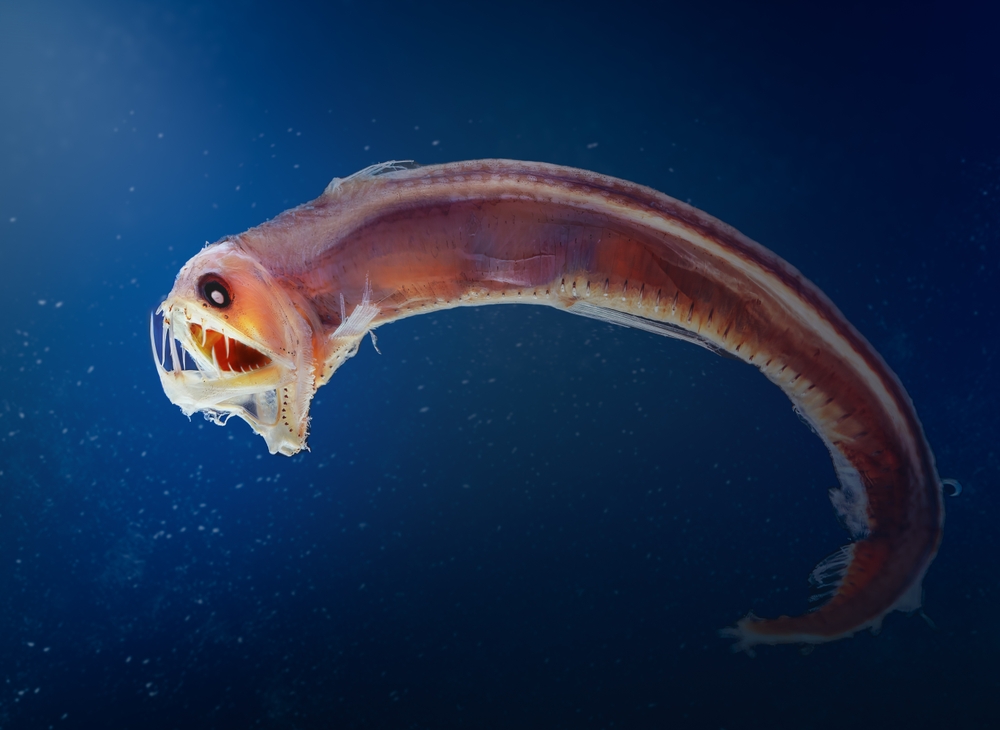
The viperfish is a nightmarish creature with razor-sharp teeth so long they can’t fit inside its mouth. Instead, these teeth curve menacingly over its head, giving it the appearance of a creature designed to terrify. Living in depths up to 5,000 feet, the viperfish is a master of the deep, using bioluminescent organs along its body to attract and ambush prey. Its terrifying jaws can open wide to capture fish and other prey that wander into its path, snapping shut with a speed that ensures nothing escapes. The viperfish’s eerie glow is not just for show—it’s a deadly tool used to lure its unsuspecting meals.
Despite their fearsome look, viperfish are relatively small, usually only growing to about a foot in length. They are solitary hunters, preferring the inky blackness of the deep ocean where their bioluminescence can be put to good use. As one of the ocean’s most formidable hunters, the viperfish’s fearsome reputation is well-earned. While humans rarely, if ever, encounter these creatures, knowing they exist adds a sense of wonder and awe to our understanding of the ocean’s depths. If you ever find yourself pondering the mysteries of the deep sea, remember the viperfish—one of the ocean’s true nightmares brought to life.
6. The Blobfish
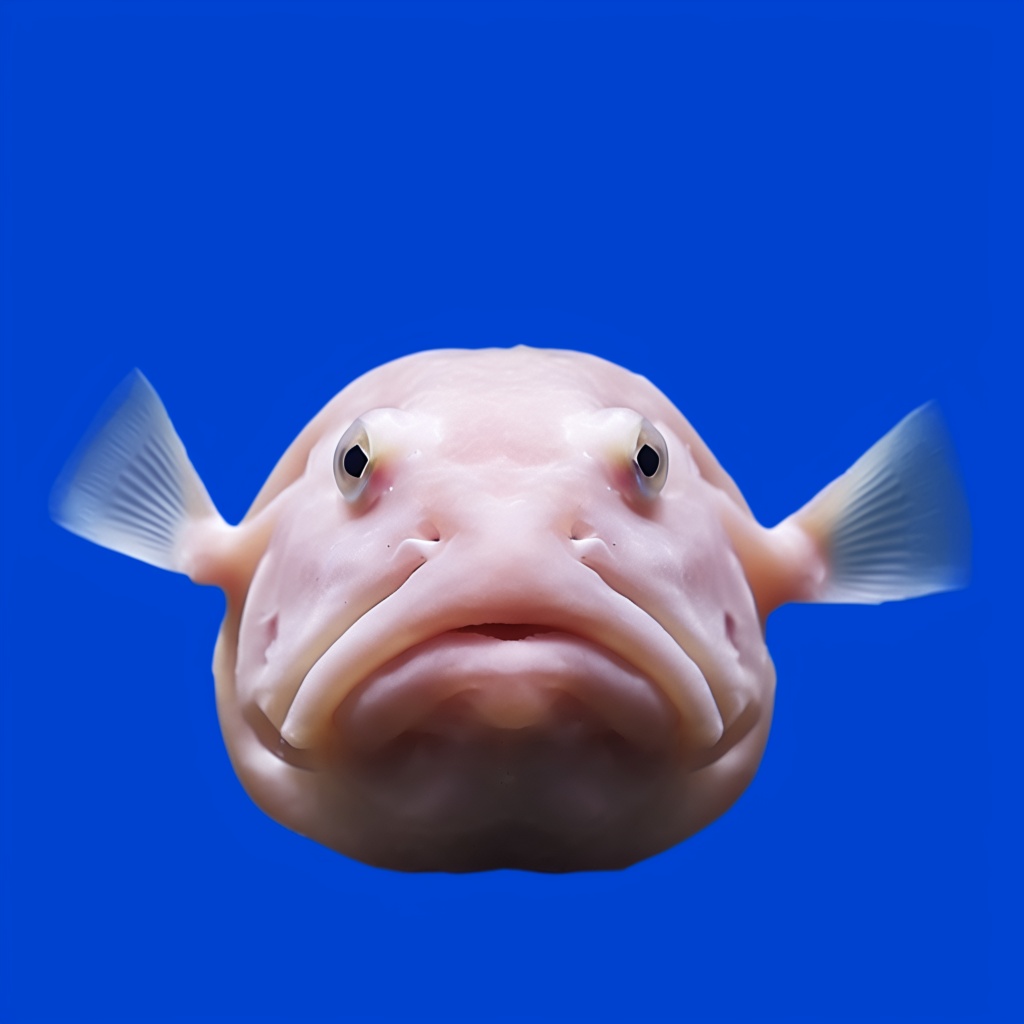
The blobfish might not seem terrifying at first glance, but its unsettling appearance has earned it a spot on this list. Known for its gelatinous, droopy face, the blobfish looks like a creature that has melted under the ocean’s pressure. Living off the coast of Australia at depths of 2,000 to 4,000 feet, the blobfish is rarely seen by humans. Its shapeless body allows it to hover just above the ocean floor, conserving energy and waiting for food to drift by. The blobfish’s diet consists mainly of small crustaceans and other edible matter that wander into its path, making it a passive yet effective predator.
While it might not be aggressive or dangerous, the blobfish has become a symbol of the bizarre and unexpected creatures that inhabit our oceans. Its unique appearance is due to the immense pressure of its deep-sea environment, which supports its jelly-like body structure. When brought to the surface, the blobfish’s body loses its shape, resulting in the now-infamous saggy appearance. Despite its unusual looks, the blobfish plays an important role in its ecosystem, maintaining balance in the deep-sea food chain. It’s a reminder that nature doesn’t always conform to our ideas of beauty or normalcy and that the ocean is full of surprises.
7. The Blue-Ringed Octopus
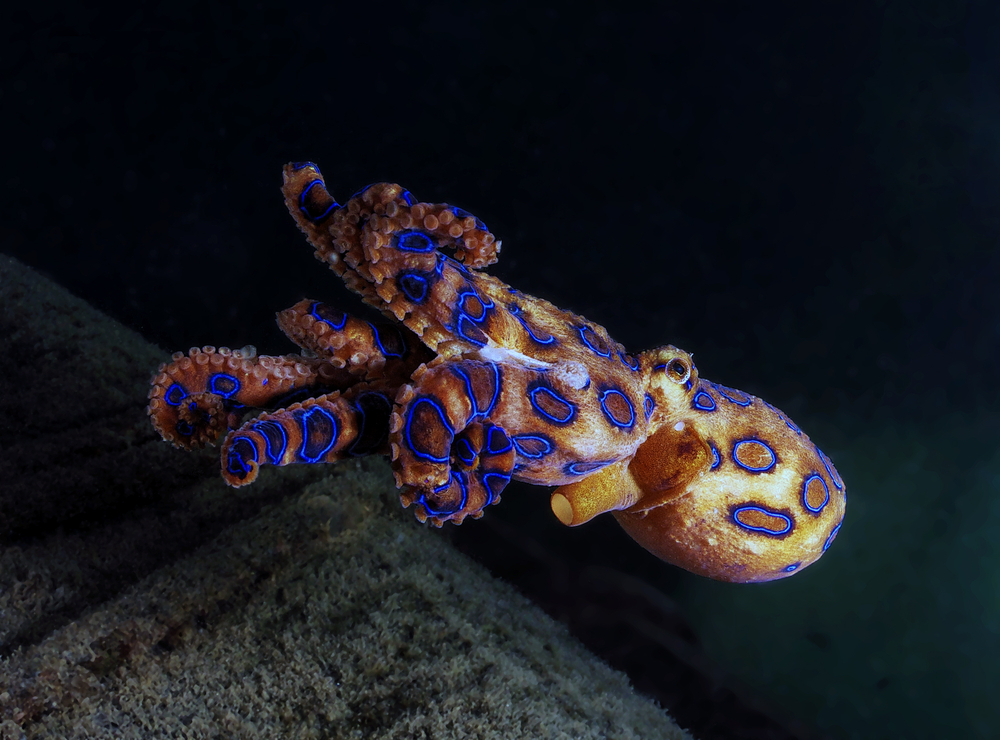
Don’t let the blue-ringed octopus’s small size and vibrant colors fool you—this creature is one of the most venomous animals in the ocean. Found in the shallow waters of the Pacific and Indian Oceans, this tiny octopus packs a punch with venom potent enough to kill a human within minutes. The blue-ringed octopus is usually shy and reclusive, hiding in crevices and under rocks, but when threatened, its blue rings become vivid warning signals. This display is both beautiful and deadly, serving as a reminder that danger often comes in small packages.
The blue-ringed octopus’s venom contains a powerful neurotoxin called tetrodotoxin, which affects nerve impulse transmission and can cause muscle paralysis. There is no known antidote, making encounters with this creature potentially fatal if not treated immediately. Despite its deadly abilities, the blue-ringed octopus is not aggressive and only uses its venom in self-defense. Its presence in the ocean serves as a cautionary tale of the hidden dangers that can be found in the most unexpected places. While their striking appearance might draw attention, it’s best to admire these creatures from a safe distance, respecting their place in the ocean’s complex web of life.
8. The Fangtooth Fish
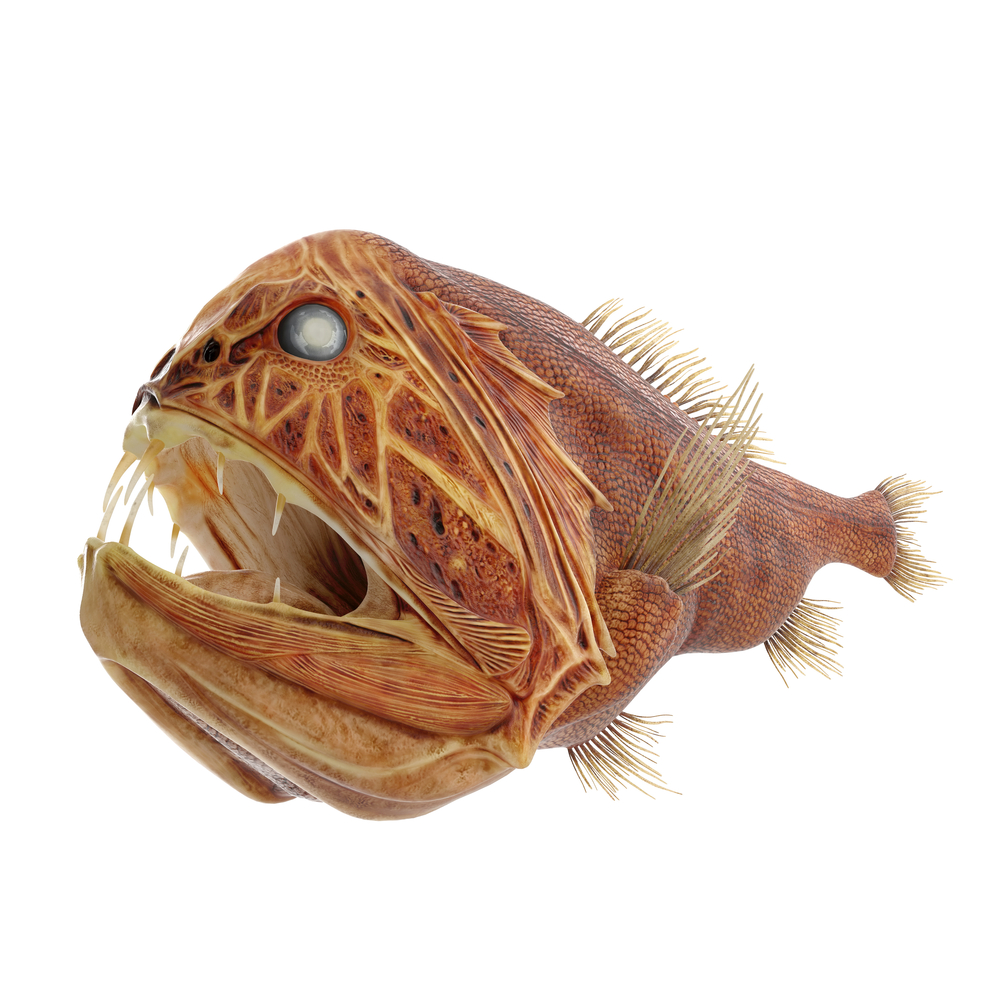
The fangtooth fish looks like it swam straight out of a horror story, with massive, sharp teeth that are proportionally the largest of any fish in the ocean. Found at depths of up to 16,000 feet, these fearsome-looking creatures are adapted to life in the extreme pressures and darkness of the deep sea. Despite their fearsome appearance, fangtooth fish are relatively small, usually only growing to about six inches in length. Their large mouths and sharp teeth are perfect for catching prey in the dark ocean depths, where food can be scarce.
Fangtooth fish are solitary hunters, roaming the deep sea in search of anything they can catch. Their large teeth make it difficult for them to close their mouths completely, giving them a perpetually menacing grin. While they might look terrifying, fangtooth fish pose no threat to humans, as their realm of the ocean is far removed from ours. They are fascinating examples of how life can adapt to even the harshest environments, using every available resource to survive. While you might never see a fangtooth fish in person, just knowing they exist is enough to spark curiosity and fascination with the deep ocean’s mysteries.
9. The Giant Isopod

The giant isopod might look like a creature from another planet, but it’s very much a part of our world. Resembling a massive, underwater roly-poly, these crustaceans can grow up to two and a half feet long. Found in the deep, cold waters of the Atlantic, Pacific, and Indian Oceans, giant isopods are scavengers that feed on the remains of dead animals that sink to the ocean floor. Their large, armored bodies and numerous legs give them a prehistoric appearance, making them a chilling sight for anyone unprepared for their presence.
Giant isopods are well adapted to life in the deep sea, where food is scarce, and conditions are harsh. They have a slow metabolism and can survive long periods without food, scavenging whatever they can find, from whale carcasses to sunken fish. Despite their rather creepy appearance, giant isopods play an essential role in their ecosystem, helping to clean up the ocean floor by consuming dead matter. Their existence is a reminder of the incredible diversity of life that thrives in the ocean’s most extreme environments. While they might not be the most glamorous creatures, giant isopods are a true testament to nature’s resilience and adaptability.
10. The Portuguese Man O’ War
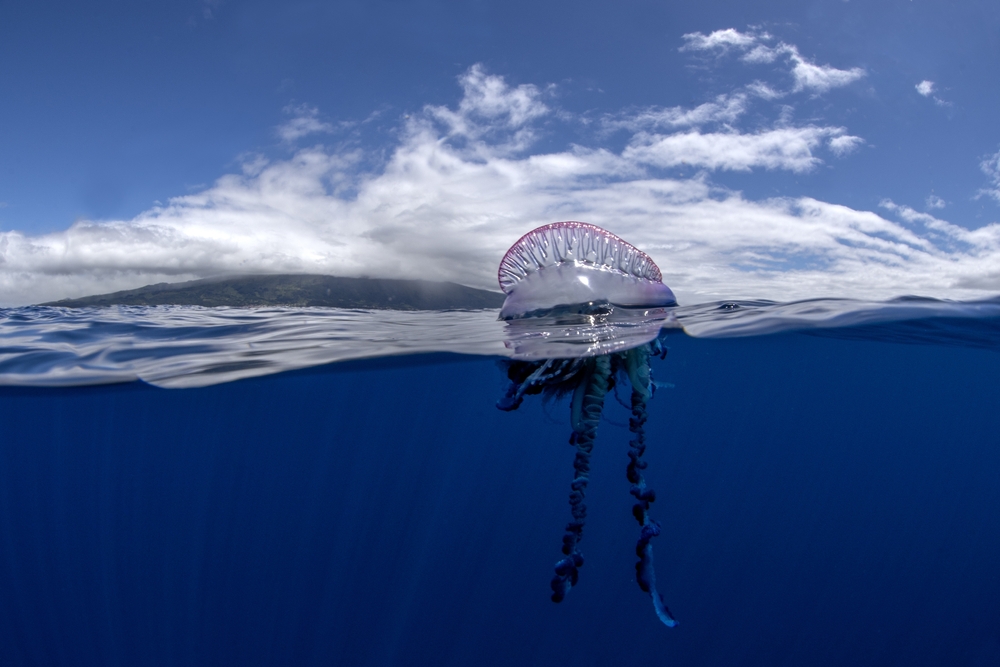
Often mistaken for a jellyfish, the Portuguese Man O’ War is a siphonophore, a colonial organism made up of specialized polyps that work together as one. Its translucent, balloon-like float is topped with a crest that acts as a sail, allowing it to drift along the ocean’s surface. Beneath this float are long, venomous tentacles that can stretch up to 100 feet, delivering painful stings to anything that comes too close. The Portuguese Man O’ War is a true terror of the sea, feared by swimmers and marine life alike.
While its sting is rarely fatal to humans, it can cause severe pain, welts, and even allergic reactions. The Portuguese Man O’ War’s beauty is deceptive, with its iridescent colors and graceful movements belying the danger it poses. These creatures often wash up on shores, where their tentacles can still sting long after being detached from the float. It’s best to admire their beauty from a distance, respecting the power and danger they wield. Known as the “floating terror,” the Portuguese Man O’ War is a reminder that the ocean is full of creatures that are as fascinating as they are fearsome.
11. The Stonefish
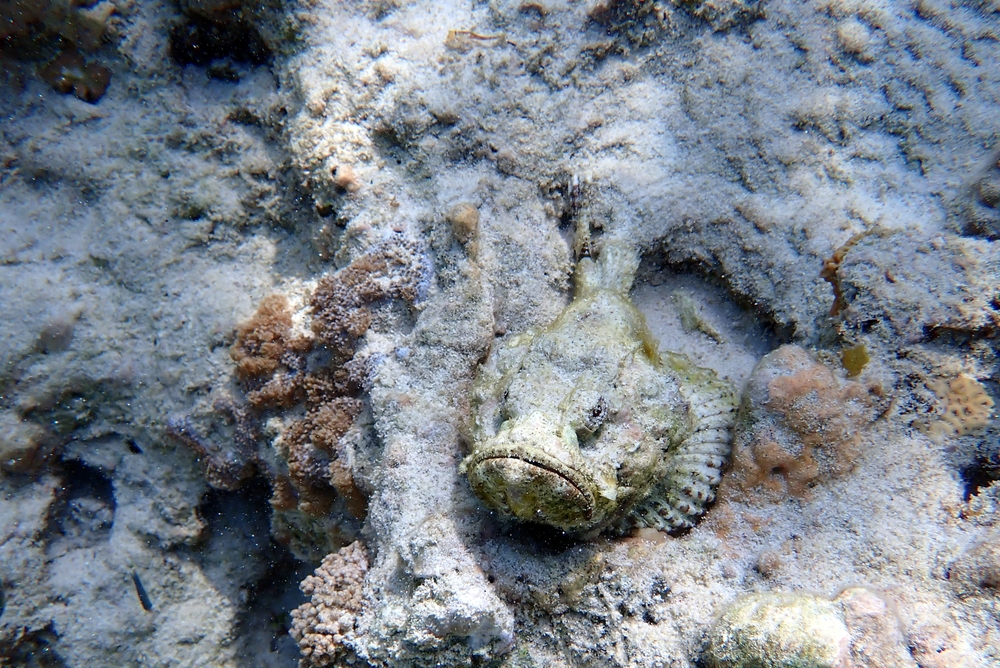
The stonefish is a master of disguise, blending perfectly with its surroundings on the ocean floor. Its mottled, rock-like appearance makes it one of the most camouflaged creatures in the sea, and also one of the most dangerous. With venomous spines along its back, the stonefish can deliver a sting that is both excruciatingly painful and potentially lethal. Found in the coastal waters of the Indo-Pacific region, stonefish are ambush predators, lying in wait for unsuspecting prey to swim by.
While their venom is primarily used for self-defense, stepping on a stonefish can result in serious injury or even death if not treated promptly. Their ability to blend in with the environment makes them particularly dangerous for swimmers and divers, who might not notice them until it’s too late. Despite their dangerous reputation, stonefish play an important role in their ecosystem, controlling populations of smaller fish and crustaceans. They are a reminder of the hidden dangers that can lurk beneath the ocean’s surface, waiting to strike when least expected. Admire them from afar, and be cautious when exploring the rocky shores and reefs they call home.
12. The Lionfish
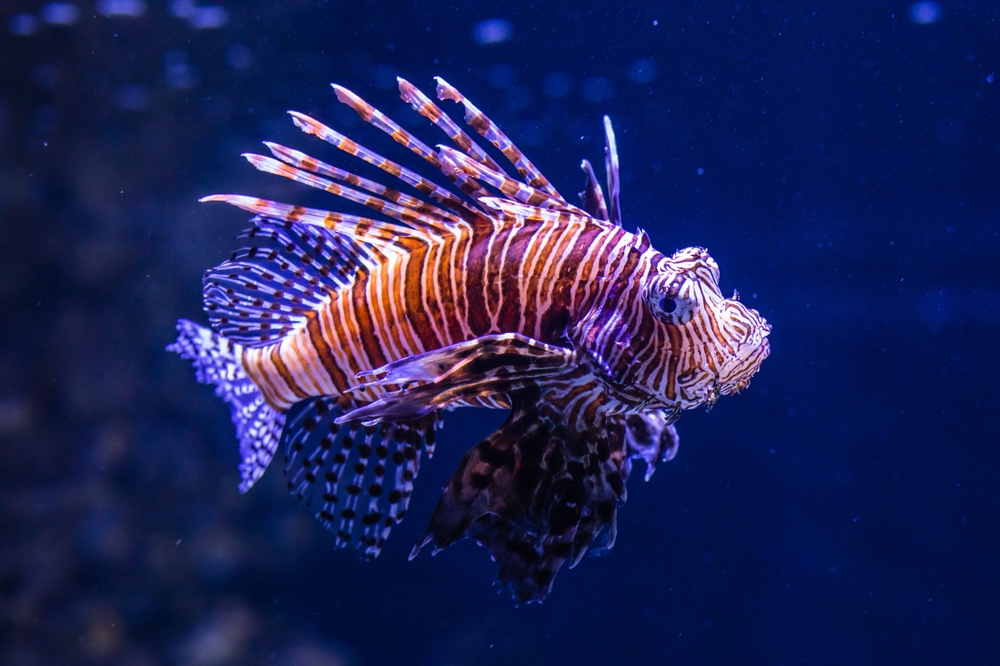
The lionfish is both beautiful and deadly, with striking stripes and venomous spines that make it one of the most recognizable fish in the sea. Native to the Indo-Pacific region, these fish have become invasive in the Atlantic Ocean, where they pose a significant threat to local marine life. Lionfish are voracious predators, capable of consuming large quantities of fish and crustaceans, leading to a decline in native populations. Their venomous spines provide a strong defense against predators, making them a formidable force in their environment.
Lionfish are masters of stealth, using their elaborate fins to herd prey into a corner before striking with lightning speed. Their rapid reproduction rate and lack of natural predators in new environments have allowed them to spread rapidly, causing ecological imbalances in affected areas. Despite their beautiful appearance, lionfish are a reminder of the consequences of introducing non-native species into new ecosystems. While they are not aggressive towards humans, their venomous spines can cause painful stings, so it’s best to admire them from a safe distance. Efforts are underway to control their populations, but the lionfish remains a powerful example of the delicate balance within marine ecosystems.
